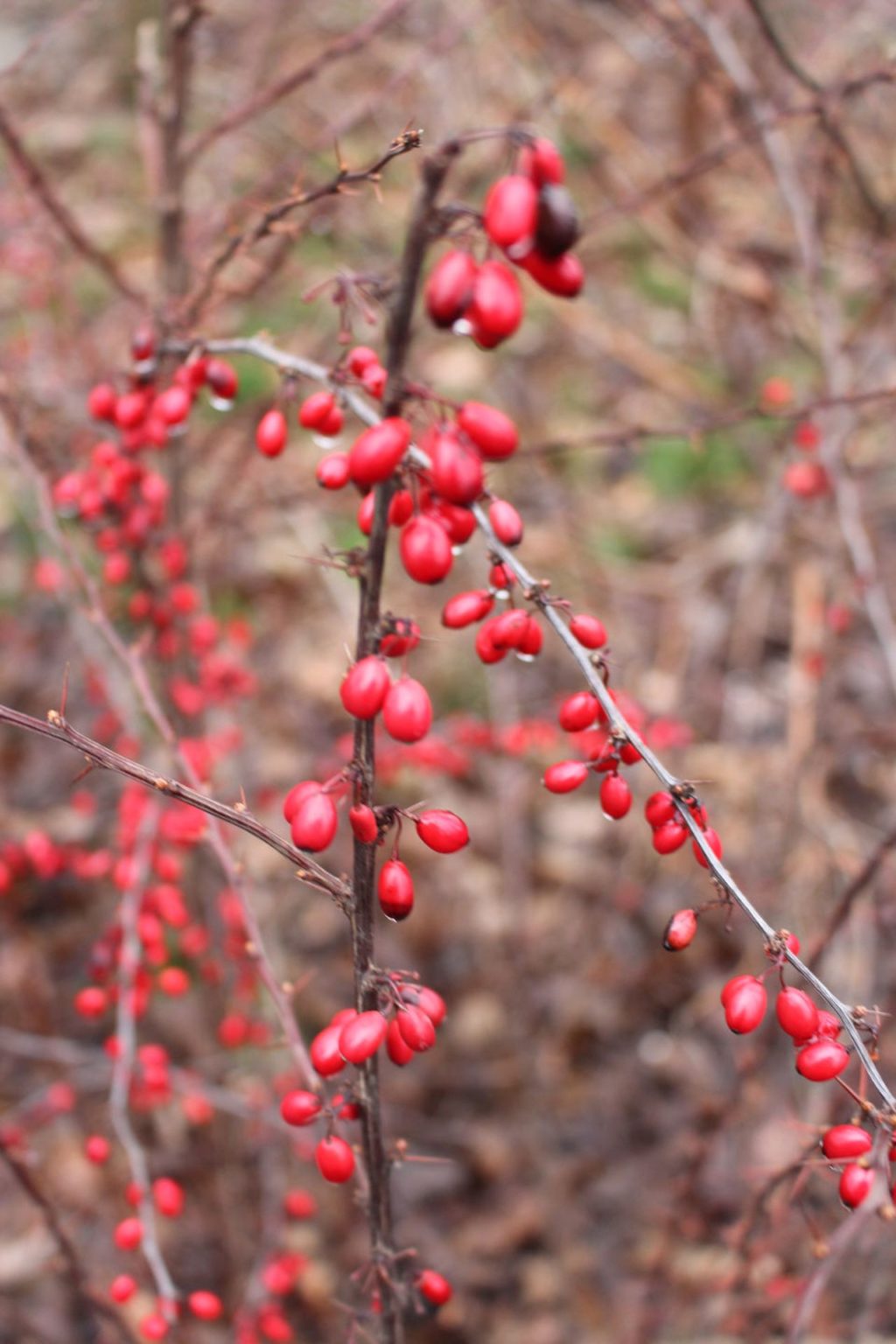National Pollinator Week Day 5: Know Your Enemies! Identification and Control of Undesirable Vegetation

Common barberry. Wikimedia Commons
Invasive and aggressive plants can be a major roadblock to success in your efforts to establish pollinator habitat on your property. For this reason, I highly recommend “Invasive plants in Massachusetts: 31 types that could be growing into a jungle in your backyard,” with illustrations, descriptions, and suggested methods for eradication or control of these pernicious plants. It can also be helpful to enlist the services of a landscaper or experienced gardener to point out any invasive or aggressive species on your land.
Technically speaking, an invasive plant is by definition exotic (non-native). But let’s be clear: not all non-native plants are invasive. Also, many native plants can be quite weedy; an example is common milkweed (Asclepias syriaca) that has deep underground runners enabling it to pop up anywhere, making it quite difficult to uproot once established. If you want to provide a host plant for monarch butterfly caterpillars and don’t want your garden completely overrun, you’re better off with orange-flowered butterflyweed (A. tuberosa) or the light pink to purple swamp milkweed (A. incarnata).
The particular strategy that you choose to eliminate or control unwanted vegetation will depend on the species and extent of infestation. You’ll want to prioritize your efforts with consideration to the amount of time and money you have to devote to the project. Systematically removing plants by their roots is often the best approach, and a four-tined fork can be an indispensable tool for this purpose. Spot application of herbicide to freshly cut trunks of invasive shrubs and trees such as buckthorn, multiflora rose, autumn olive, can be the easiest, cheapest, and quickest means of eradication and is not hazardous to the environment or the applicator if done according to instructions.
Sheet mulching can also be an effective strategy, as no plant can survive without light. This method involves mowing the infested area as close to the ground as possible, smothering it by covering with a decomposable barrier layer such as overlapped pieces of cardboard or builder’s paper), and covering that with mulch. To smother Japanese knotweed, however, you’ll need something more durable such as sheets of heavy plastic that can keep its integrity for several years in order to ensure that the roots will be starved of energy.
A word to the wise: an ounce of prevention is worth a pound of cure. Give them an inch and they’ll take a mile! With patience and persistence, extensive infestations can often be successfully beaten back, but you’re better off not giving these plants a chance. Mulching can help protect pollinator gardens for getting infested in the first place. However, mulch shouldn’t be necessary once perennials are established; at this point you should be able to keep things under control with regular monitoring and removal of noxious plants.
Be an eco-hero and enjoy the delights of nature by creating your own pollinator sanctuary! Please contact me if you’re interested in participating in Amherst Area Friends of Pollinators by contributing your gardening expertise, volunteering during pollinator garden workdays, donating extra native perennials for public pollinator gardens, participating in pollinator plant swaps, or helping to spread the word to inform and inspire people and organizations about welcoming pollinators.

1 thought on “National Pollinator Week Day 5: Know Your Enemies! Identification and Control of Undesirable Vegetation”